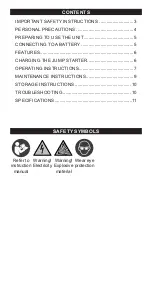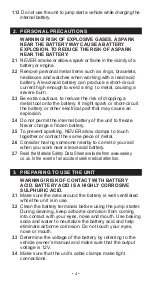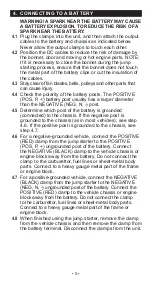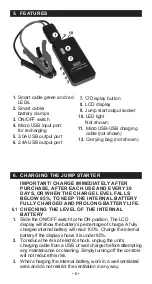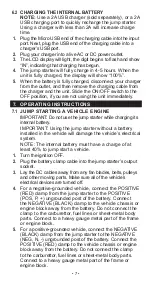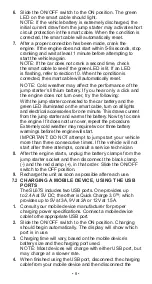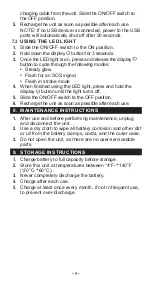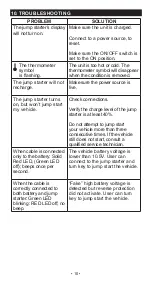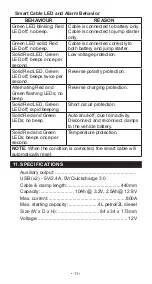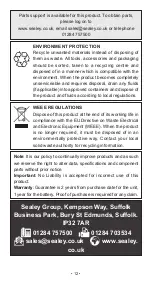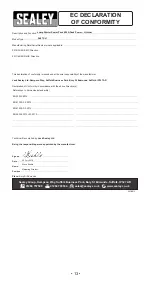
• 5 •
4. CONNECTING TO A BATTERY
WARNING! A SPARK NEAR THE BATTERY MAY CAUSE
A BATTERY EXPLOSION. TO REDUCE THE RISK OF A
SPARK NEAR THE BATTERY:
4.1
Plug the clamps into the unit, and then attach the output
cables to the battery and chassis as indicated below.
Never allow the output clamps to touch each other.
4.2
Position the DC cables to reduce the risk of damage by
the bonnet, door and moving or hot engine parts. NOTE:
If it is necessary to close the bonnet during the jump
starting process, ensure that the bonnet does not touch
the metal part of the battery clips or cut the insulation of
the cables.
4.3
Stay clear of fan blades, belts, pulleys and other parts that
can cause injury.
4.4
Check the polarity of the battery posts. The POSITIVE
(POS, P, +) battery post usually has a larger diameter
than the NEGATIVE (NEG, N, -) post.
4.5
Determine which post of the battery is grounded
(connected) to the chassis. If the negative post is
grounded to the chassis (as in most vehicles), see step
4.6. If the positive post is grounded to the chassis, see
step 4.7.
4.6
For a negative-grounded vehicle, connect the POSITIVE
(RED) clamp from the jump starter to the POSITIVE
(POS, P, +) ungrounded post of the battery. Connect
the NEGATIVE (BLACK) clamp to the vehicle chassis or
engine block away from the battery. Do not connect the
clamp to the carburettor, fuel lines or sheet-metal body
parts. Connect to a heavy gauge metal part of the frame
or engine block.
4.7
For a positive-grounded vehicle, connect the NEGATIVE
(BLACK) clamp from the jump starter to the NEGATIVE
(NEG, N, -) ungrounded post of the battery. Connect the
POSITIVE (RED) clamp to the vehicle chassis or engine
block away from the battery. Do not connect the clamp
to the carburettor, fuel lines or sheet-metal body parts.
Connect to a heavy gauge metal part of the frame or
engine block.
4.8
When finished using the jump starter, remove the clamp
from the vehicle chassis and then remove the clamp from
the battery terminal. Disconnect the clamps from the unit.


